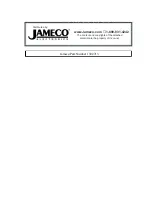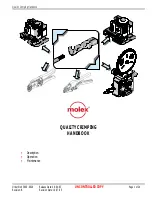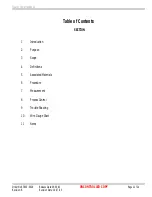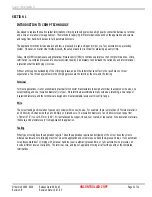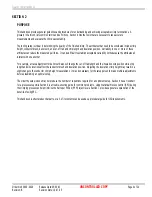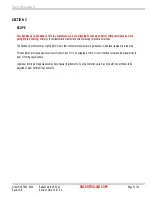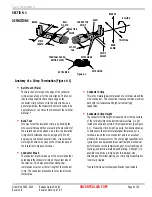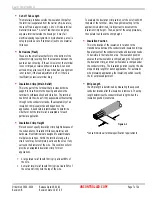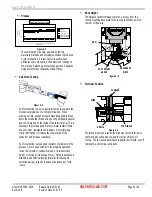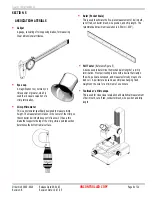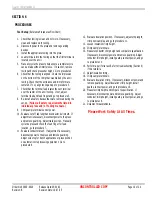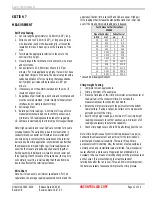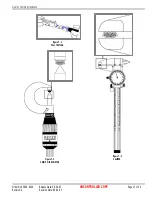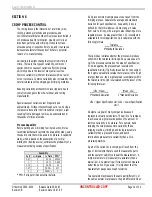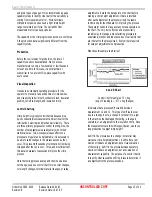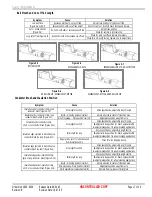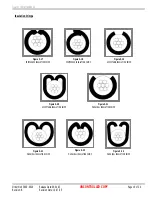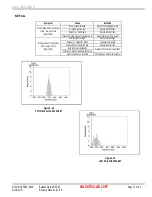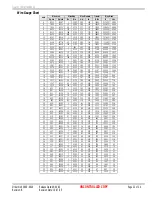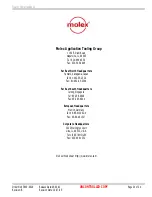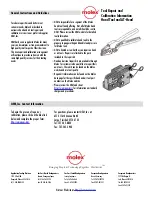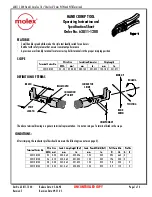
Quality Crimp Handbook
Order No 63800-0029
Release Date:09-04-03
UNCONTROLLED COPY
Page 12 of 24
Revision: B
Revision Date: 10-07-05
SECTION 7
MEASUREMENT
Pull Force Testing
1. Cut wire length approximately 152.00mm (6.00”) long.
2. Strip one end to 13.00mm (.500”), or long enough so no
wire insulation is under the insulation grip, or loosen the
insulation crimp so it has no grip on the insulation of the
wire.
3. Terminate the appropriate terminal to the wire to the
nominal crimp height.
4. Visually inspect the termination for bell mouth, wire brush
and cut strands.
5. Set pull tester to 25.4.00mm per minute (1.00" per
minute). For most applications, a higher rate will not have
a significant impact on the data. The slower rate prevents a
sudden application of force or jerking that snaps strands.
Verify higher pull rates with data taken at 1.00” per
minute.
6. If necessary, knot the unterminated end of the wire (If
insulation slips on wire).
7. Regardless of pull tester type, both wire and terminated end
must be securely clamped. (Note: Clamp terminal contact
interface, do not clamp conductor crimp)
8. Activate pull test.
9. Record pull force readings. A minimum of five pull force
measurements should be done to confirm each set-up. A
minimum of 25 readings should be taken for capability.
10. Compare lowest reading to minimum pull force specification.
Note: High variability and lower CpK's are common for double
wire applications. The variability is due to more variation in
conductor brush, conductor bell mouth and fewer strands of
one wire being in contact with the serrations on the terminal
barrel. A double crimp application is considered no better than
the smallest wire crimped. Higher pull force readings can be
seen if both wires are gripped and pulled exactly together.
Pulling each wire individually will result in a much lower pull
force reading. If both wires are of the same size, the top wire
will normally result in a lower reading than the bottom wire
due to the effects of the terminal serrations.
Wire Chart
Note: Pull force has only a minimum specification. For CpK
calculations, the average reading is assumed nominal and the
upper specification limit is set so CP and CpK are equal. High pull
force readings that increase the standard deviation can lower CpK
even if the mean and lowest reading are increased.
Test Values for Pull Force Test
UL486A
Size of Conductor
Pullout Force*
AWG
mm
2
Lb.
N
30
0.05
1.5
6.7
28
0.08
2
8.9
26
0.13
3
13.4
24
0.20
5
22.3
22
0.324
8
35.6
20
0.519
13
57.9
18
0.823
20
89.0
16
1.31
30
133.5
14
2.08
50
222.6
12
3.31
70
311.5
10
5.261
80
356.0
8
8.367
90
400.5
*Consult individual specifications
Crimp Height Testing
1. Complete tool set-up procedure.
2. Crimp a minimum of five samples.
3. Place the flat blade of the crimp micrometer across the center of
the dual radii of the conductor crimp. Do not take the
measurement near the conductor bell mouth.
4. Rotate the micrometer dial until the point contacts the bottom
radial surface. If using a caliper, be certain not to measure the
extrusion points of the crimp.
5. Record crimp height readings. A minimum of five crimp height
readings is necessary to confirm each set-up. A minimum of 25
readings is necessary to determine capability.
6. Check crimp height every 250 to 500 parts throughout the run.
Note: Crimp height is usually control charted because it is a quick,
nondestructive measurement and is critical for the termination's
electrical and mechanical reliability. There are three primary
purposes for control charting. One, the number of setup samples is
normally small, and its statistical value is limited. Two, since special
cause/effects on a proce ss are irregular and unpredictable; it is
necessary to have a means of catching changes in the process as soon
as they occur. This prevents having to scrap thousands of
terminations after the run is over. Three, and this is most important,
the data is necessary to assess and improve the crimp process.

